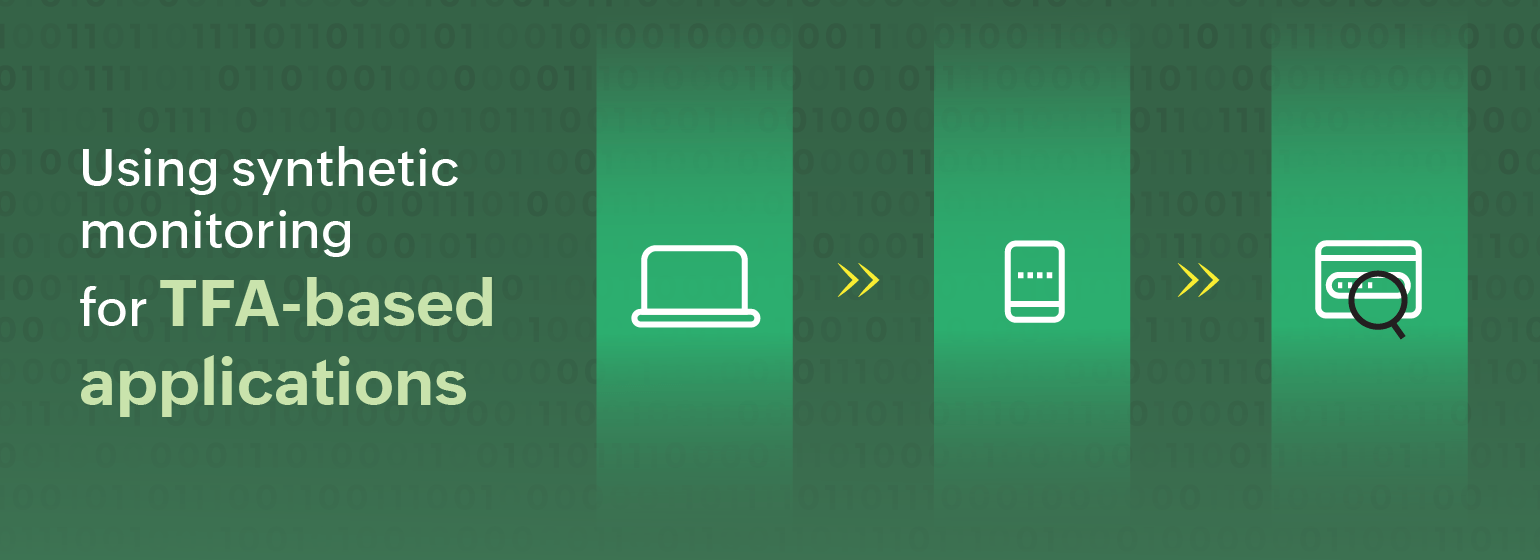Synthetic monitoring for TFA-backed applications

Two-factor authentication (TFA, sometimes 2FA) is a crucial security measure that adds an extra layer of protection to your online account. It goes beyond the traditional password-based authentication by requiring a second form of verification.
In TFA-backed applications, users are supposed to provide two forms of verification before gaining access to their accounts. These factors typically include data that the user possesses—like a password, PIN, or passphrase that the user has set up—as their primary form of authentication and a physical item owned by the user like a smartphone (such as authentication applications).
By requiring two different types of authentication factors, TFA significantly enhances security and reduces the risk of unauthorized access to user accounts, even if passwords are compromised.
TFA-backed applications are widely used across various industries and platforms, including online banking, email services, social media platforms, enterprise applications, and many cloud services. This enhances the protection of user accounts and sensitive information in today's digital landscape, where cyber threats and data breaches are increasingly common.
What is synthetic monitoring and how can it help in monitoring TFA-based applications?
Synthetic monitoring involves creating artificial transactions or user journeys to mimic real user interactions with an application. These transactions are executed at regular intervals from various monitoring locations to assess the availability, functionality, and performance of the application.
Synthetic monitoring for TFA-backed applications involves simulating user interactions with the application to ensure that the TFA process functions correctly and does not introduce any performance issues or usability challenges.
In the context of synthetic monitoring for TFA-backed applications, the monitoring process would include:
- Simulating user logins: Synthetic transactions would include attempts to log in to the application using valid credentials.
- Emulating TFA process: After successfully logging in, the synthetic monitoring tool would simulate the TFA process by providing the required second factor of authentication, such as entering a one-time passcode (OTP) which is generated by an authenticator app.
- Verifying successful authentication: The monitoring process would verify that the TFA process completes successfully and grants access to the application.
- Monitoring performance: Throughout this process, synthetic monitoring tools would measure and analyze various performance metrics—such as response times, latency, and error rates—to ensure that the TFA-backed authentication process does not introduce any performance issues or delays.
Advantages of synthetic monitoring
Benefits of synthetic monitoring for TFA-backed applications include:
- Proactively identifying issues: Synthetic monitoring allows organizations to proactively identify and address any issues with the TFA process before they impact real users.
- Ensuring security: By regularly testing the TFA process, an organization can ensure that it remains secure and effective in protecting user accounts against unauthorized access.
- Optimizing performance: Synthetic monitoring helps organizations optimize the performance of the TFA process by identifying and addressing any performance bottlenecks or usability challenges. Moreover, by using synthetic monitoring tools like Site24x7's, you can obtain detailed information through root cause analysis reports or dashboards. This data can help you drill deep and take necessary actions. Also, you can even obtain screenshots or videos that can help you check the pages that have loaded in each step of the transaction.
In a nutshell, synthetic monitoring helps TFA-backed applications to ensure the security, reliability, and performance of applications. Try using our synthetic monitoring toolsynthetic monitoring tool to monitor and track the transactions on your TFA-protected applications.
Comments (0)